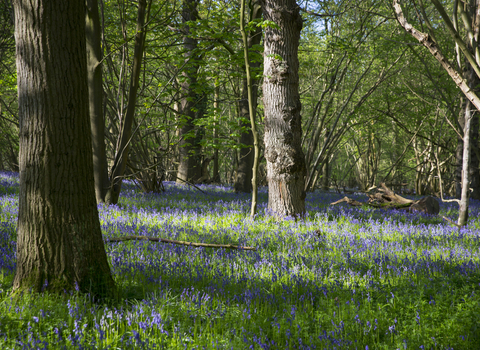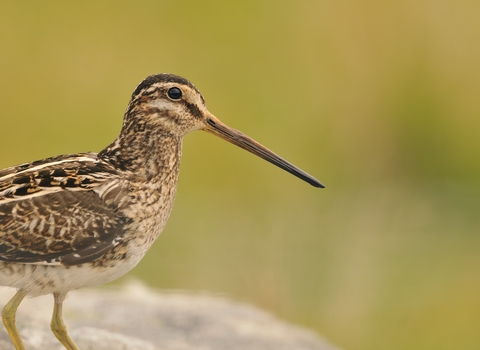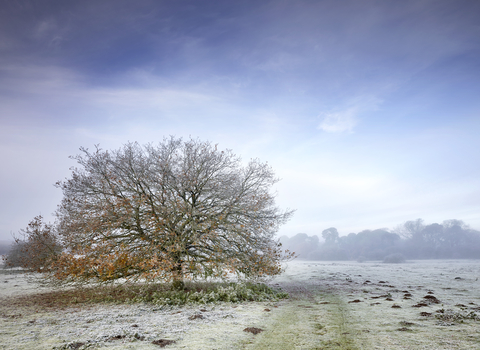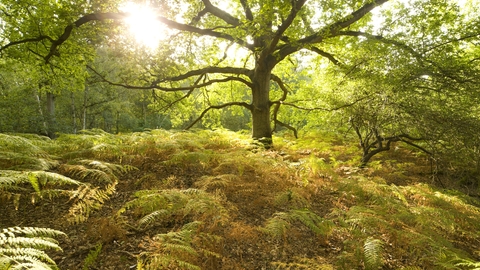
Thompson Common (credit: Richard Osbourne)

Water plants at Thompson Common (credit: Richard Osbourne)

Wet woodland at Thompson Common (credit: Richard Osbourne)
Thompson Common
Location
OS Map Reference
TL 940 965View on What3Words
Know before you go
Dogs
When to visit
Opening times
Dawn till dusk, every day, all year roundBest time to visit
From roe deer and great crested newt to bladderwort and red-eyed damselfly – there are almost too many highlights to mention at Thompson Common. It is a fantastic reserve to visit any time of the year.About the reserve
This magnificent reserve is a combination of wet and dry grassland, heathland with scattered pools, rough scrub, and mature woodland.
Thompson Common is famous for its wonderful collection of ‘pingo’ ponds. Pingos are small tundra hillocks created in the landscape during the last Ice Age. Spring-water seeping up into the permafrost instantly froze, creating large lenses of ice, similar to a blister. Once the ice melted, they collapsed to form a basin in the ground. At Thompson Common these features still exist and the springs that originally formed them still provide water that feeds the pingo ponds today.
These shallow, fluctuating pools are home to a variety of interesting wildlife communities. The whole site contains a stunning array of flora, with hundreds of plant species recorded.
In spring the common is alive with birds, with warblers singing from every bush. Visit in early May and you’ll be treated to the glory of a dawn chorus.
Thompson Common is also one of the most important sites in the county for dragonflies and damselflies, with many species regularly seen here. A visit in July and early August offers an amazing spectacle with huge numbers of dragonflies filling the air. A wide variety of species of butterfly and hundreds of species of beetle have been found on the common.
The reserve’s most famous resident is the northern pool frog, the UK’s rarest amphibian. The pool frog became extinct in the UK at the end of the 20th century, with the last known colony at NWT Thompson Common. In 2021, in partnership with Amphibian and Reptile Conservation, we successfully re-introduced northern pool frogs here using animals imported from Sweden.
We are working to reinstate some of the lost pingo ponds, known as ‘ghost pingos’, on newly acquired land adjacent to the reserve. Many of these wonderful, ice age ponds were drained or lost to agriculture through deep ploughing and infilling. As the pingos are recovered wildlife is quickly returning to these ancient spaces.
Species
Habitat
Contact us
Environmental designation
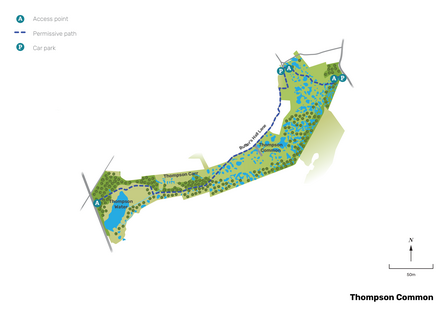
Illustrated map of Thompson Common.
Seasonal highlights
All year round
From roe deer and great crested newt to bladderwort and red-eyed damselfly – there are almost too many highlights to mention at Thompson Common. It is a fantastic reserve to visit any time of the year.

